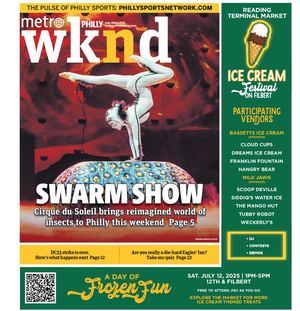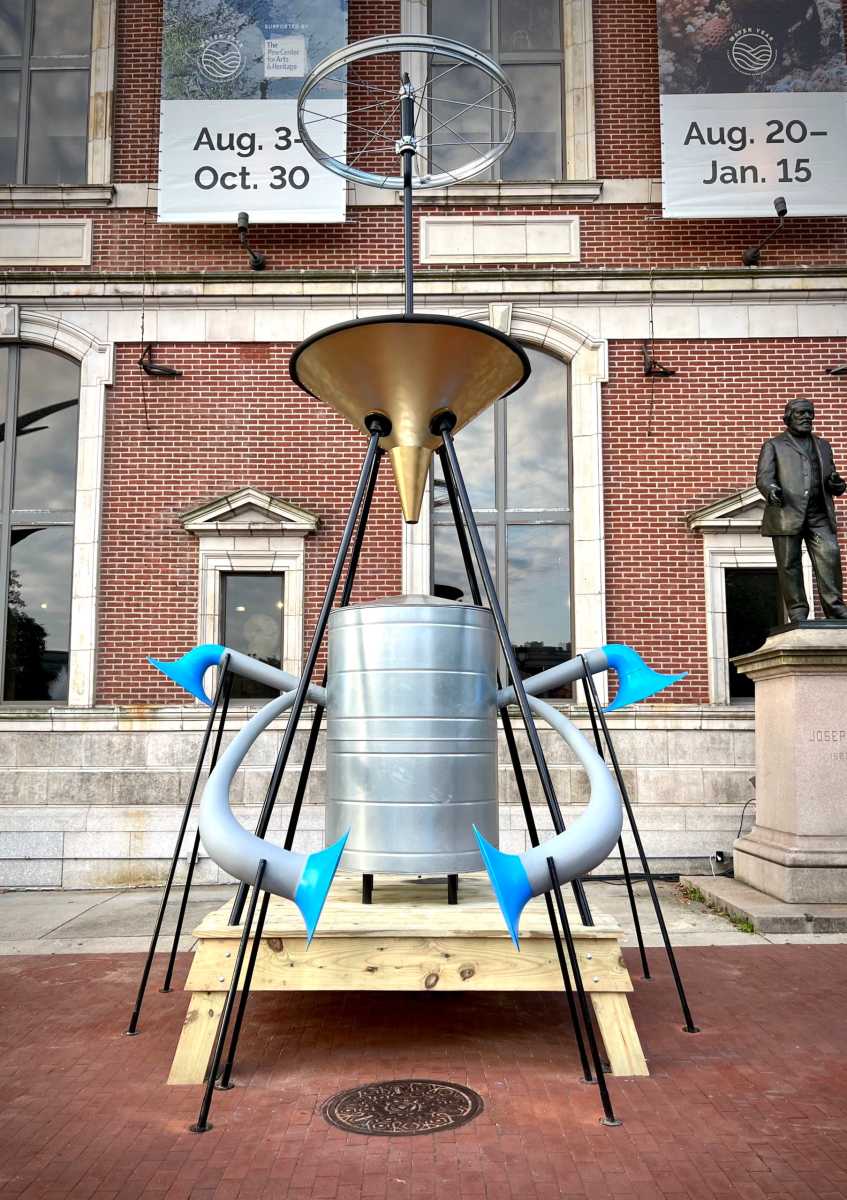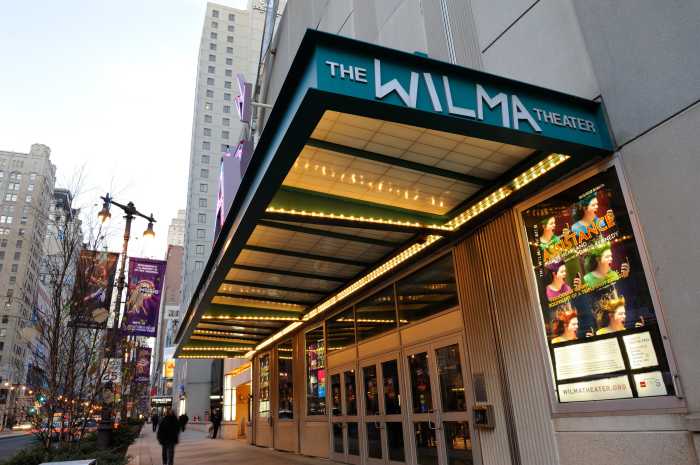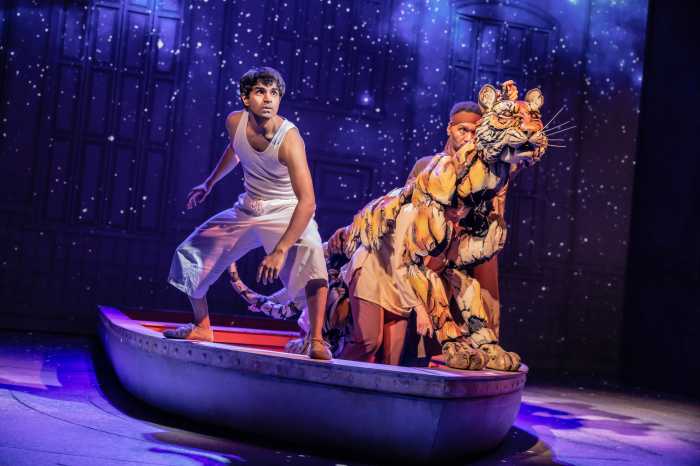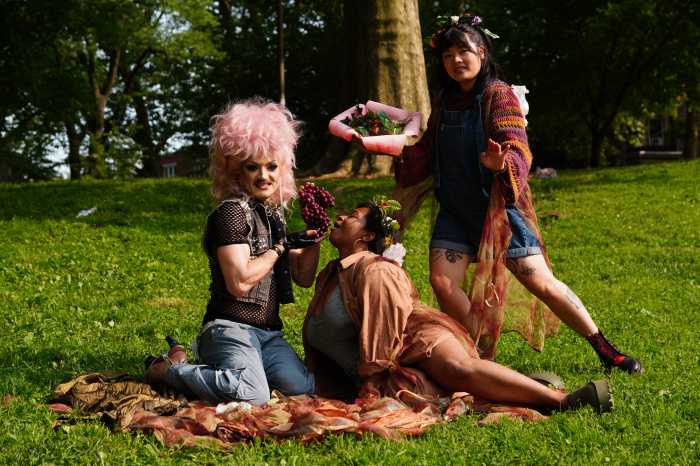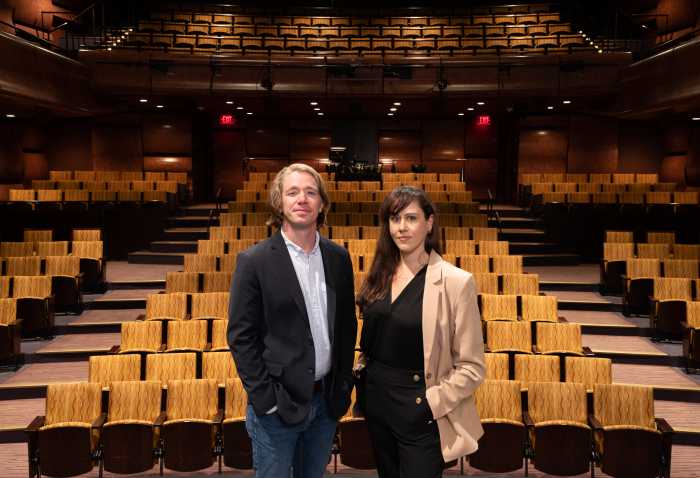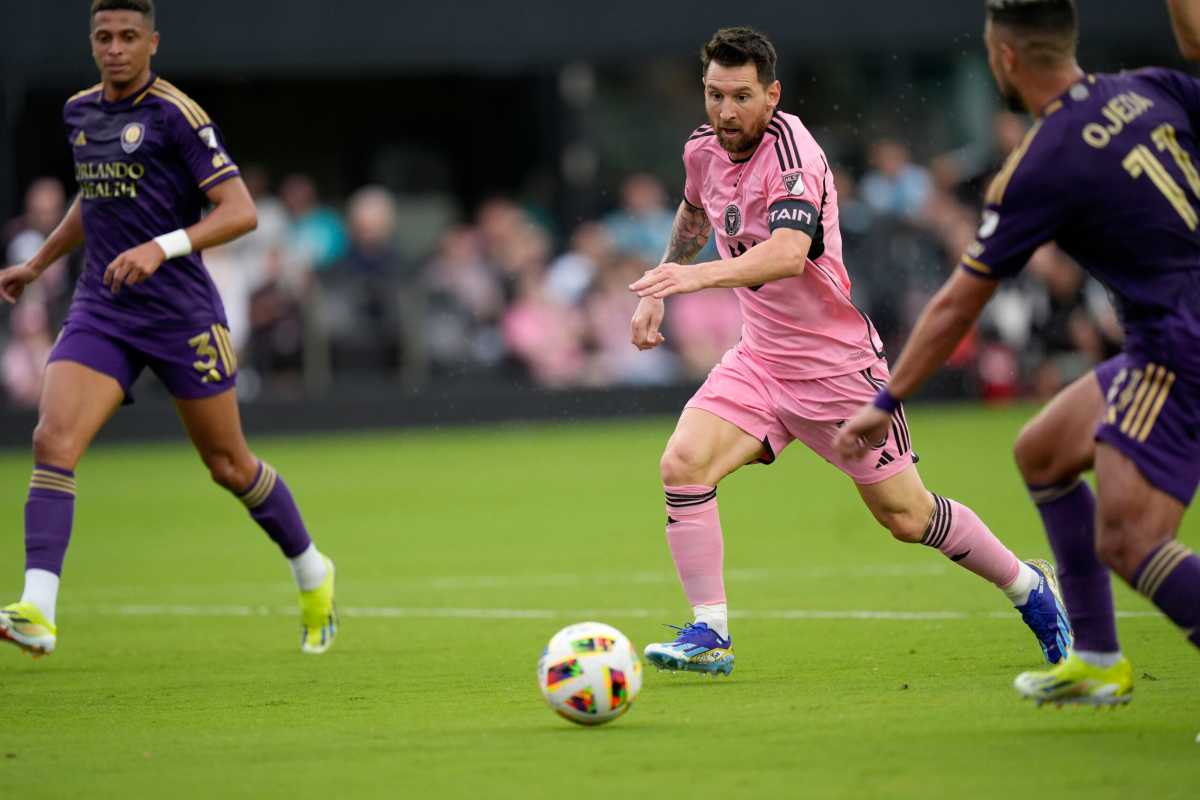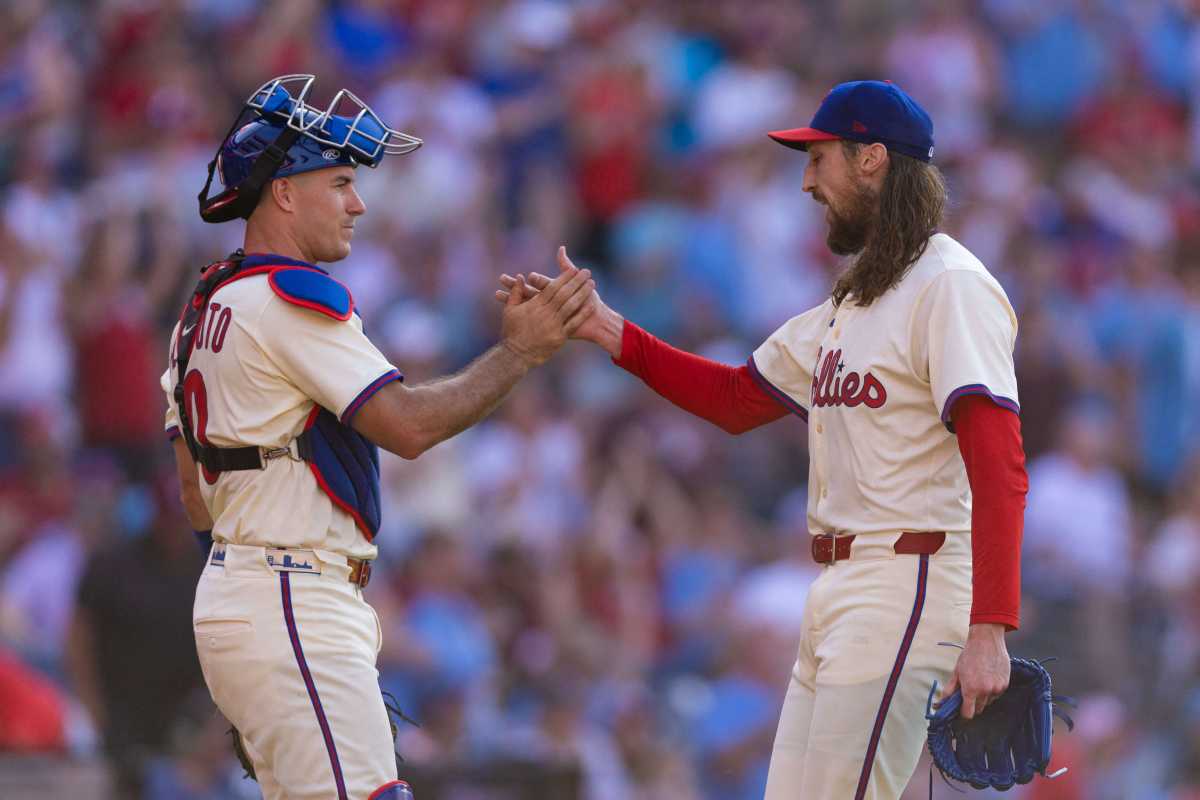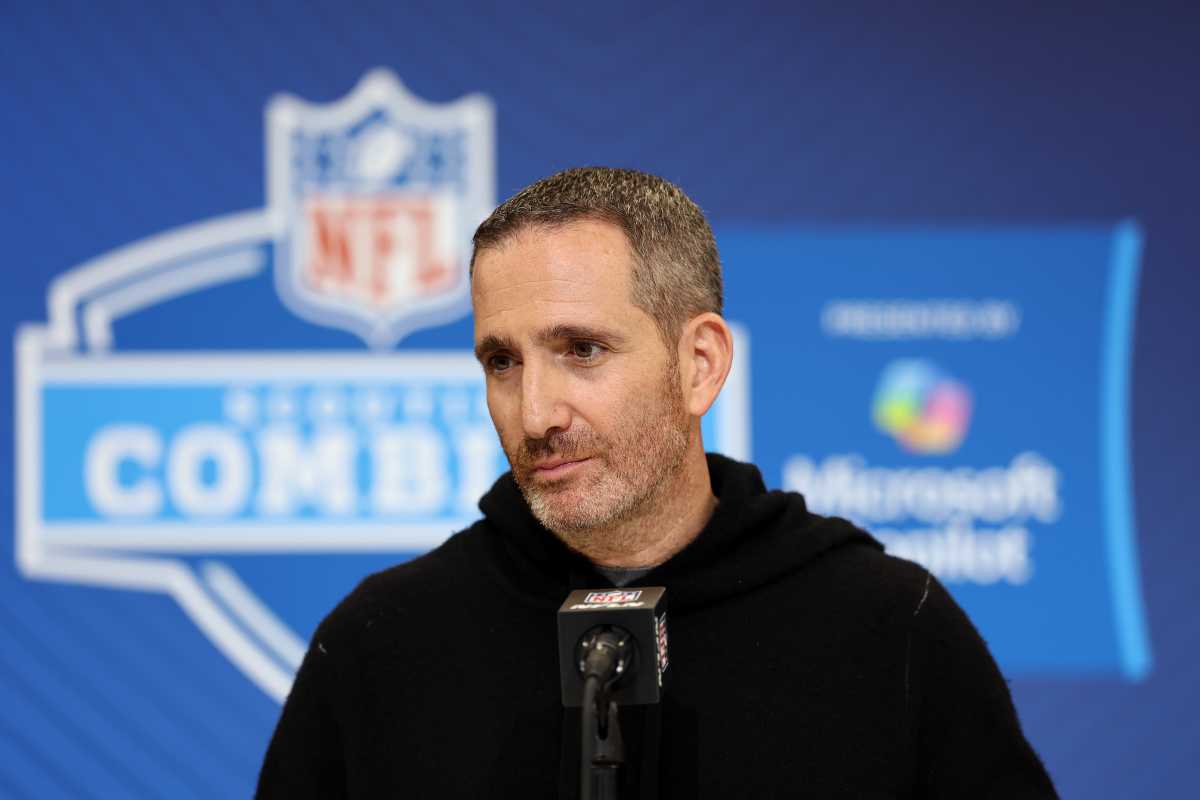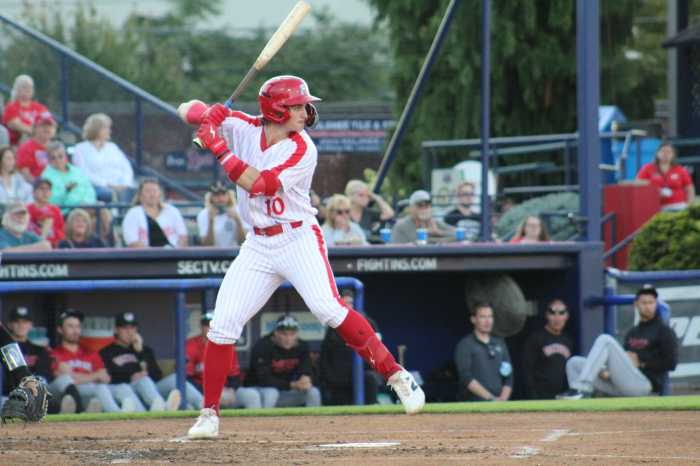Known for its highly intellectual, instinctual and inventive brand of movement theater, Philadelphia’s New Paradise Laboratories and its co-founding director-conceptualist Whit MacLaughlin chose something less performative, radically different and more literally environmental for NPL’s newest work, “How to Get to the River.”
Running Wednesdays to Sundays through Oct. 30, MacLaughlin’s “urban watershed adventure walk” collaboration with Little Baby’s Ice Cream’s Pete Angevine, scientists from the Patrick Center for Environmental Research, musical water sculptors, visual artists, composers, sound installation-ists and the deep abiding voice of the Schuylkill River will lead walkers from the Academy of Natural Sciences down Cherry Street through a micro-watershed of the Schuylkill.
At the end of the interactive walking tour and its intimate conversation with the environment, you’ll chill inside the Watershed’s pavilion to “hear the actual voice of the Schuylkill River, piped in from nearby, and FEEL the presence of this magnificent resource – 750,000 years old – we barely ever stop to listen to with our whole selves,” says MacLaughlin. “It’s quiet, meditative, and huge…informs our landscape, traverses our neighborhoods and underpins our lives.”
MacLaughlin stopped walking, sat still and discussed “How to Get to the River.”
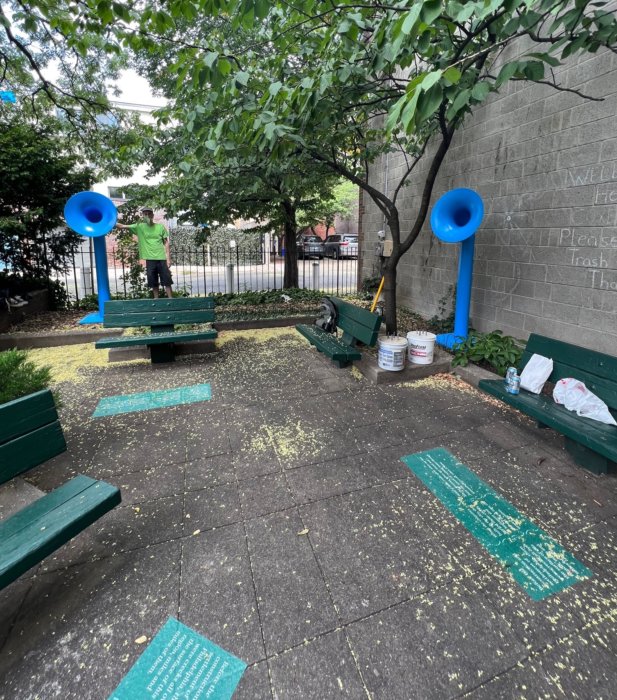
You said from the outset that this is a very different NPL project. Were you looking to get away from the physical/performative aspects of theater?
Theatre basically didn’t happen for two years-plus due to the pandemic. I had been speaking for some time with the remarkable, refreshing executive director of The Academy of Natural Science, Scott Cooper, about the direction he wanted to take his beloved, OG Philadelphia cultural institution. “I want to feature what we do every day – research. I want the Academy to speak the mind of a scientist with the sensibility of an artist.”
Surely, you had a billion ideas.
Over time we settled on one: creating a museum experience with NONE of the usual museum parameters – no objects, no display cases, no signage, not even taking place in the building. What could a no-museum museum experience possibly be? I was intrigued – you know how New Paradise Labs rolls. If no one knows what a thing could possibly be, we’re onboard.
How did you get from concept to inventing a way forward?
What appeared was an experience that functioned as a meditation generator delivering an embodied experience of the watershed. A walk down the street to the Schuylkill River. “How To Get to The River” is like a stage production, broken up and spread through a neighborhood, featuring the voice of the watershed, real and imagined. It’s theatre with no actors. The central character is a ghost – submerged water – that emerges over time. We hear it, we see it, we imagine it, we feel it.
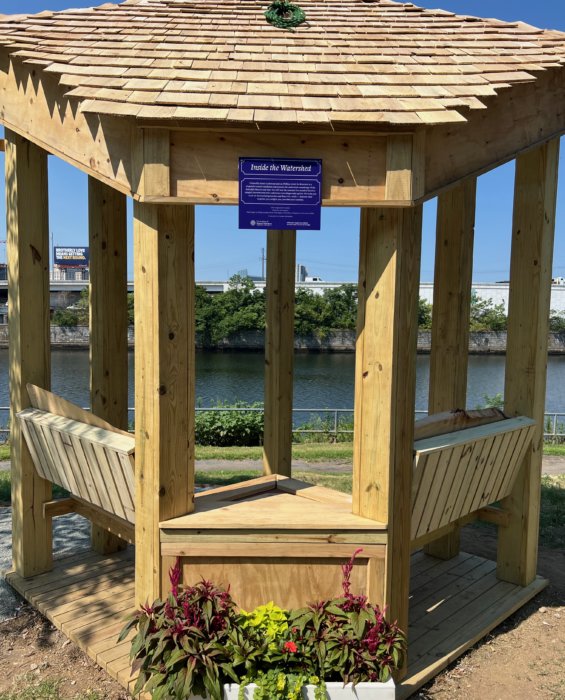
How does water – its feel, look, ambience – become relevant to you?
The western US is starving for water. We’re going to become a place, here in Pennsylvania, for water refugees and very soon. And yet we mistreat this most glorious of resources as if we think it will always be there for us, just when we need it, exactly how we want it. We’ve got a lot to learn. And yet, it was an early decision for NPL to avoid apocalyptic scenarios with this piece. Mostly we want people to fall deeply in love with the watershed. To feel something in our bones about water in the urban ecology. Plus, one thing we agreed upon early: NO SCREENS. We didn’t want people walking down the street, looking at the brave world of urban watershed with their noses in their phones. I used to be the virtual theatre guy in town and I pivoted on a dime. The fact was, I had grown tired of digital communication during the quarantine – I suspect we all did.
Can you describe how all of this interacts with its music, live and environmental?
The river and the watershed spoke to us – in moss, in debris, in water-instigated deterioration as water dissolves damned near everything. It started to seem that water etched its stories into the landscape like a sculptor carving rock. These stories presented themselves to us as sound, as a voice. We turned our attention to music. The music of trickling water, the music running through sewers underfoot, the way composers interpreted water into sound. Liz Phillips and Annea Lockwood, composers of international stature, came onboard to deliver the actual sound of the Schuylkill River captured through hydrophones. Pete Angevine, the musician among us, brought in research about suikinkutsu, the Japanese garden embellishments that produce the sound of trickling water. That idea became Attunement, the sculpture out front of the Academy designed by David P Gordon, a scenic designer that has been a valued collaborator of mine for years.
What was it like for NPL to work with scientists? Do they think like artists?
We built relationships. We tried to listen deeply and keep our minds open. There was a lot of dating until we found our true love. It came slowly. We were floundering, wondering what we had gotten ourselves into, having conversations with our six scientist collaborators. Creating alternate realities woven out of pure fancy. Always fascinating (and polyamorous), but we didn’t yet know what we were doing. One day we were talking, talking, talking, and in walked Lin Perez, just the coolest activist scientist I have ever met. They said, “Do you know, the street behind the ANS – Cherry Street – is a micro-shed?” We ran outside. There it was, the whole project. Do scientists think like artists? Depends. They work on things with deep, committed imagination. Their imaginations tend to be “thingie”, meaning it’s built out of things; there’s an objective reality at the heart of everything. Artists are more subjective. For us, light is more wave than particle. Scientists approach the world through the front door. Artists sneak in through the back door. Or maybe it’s the other way around.
